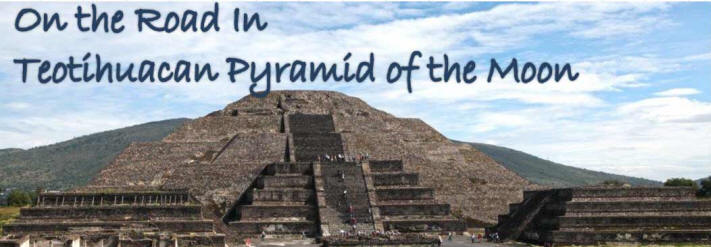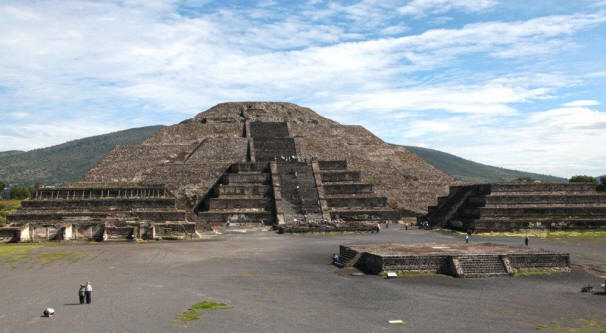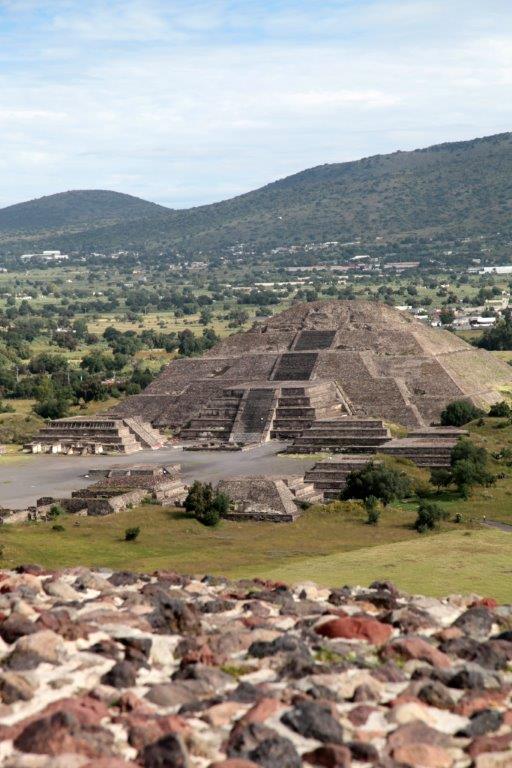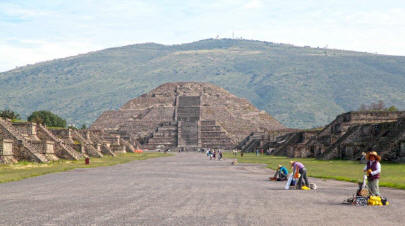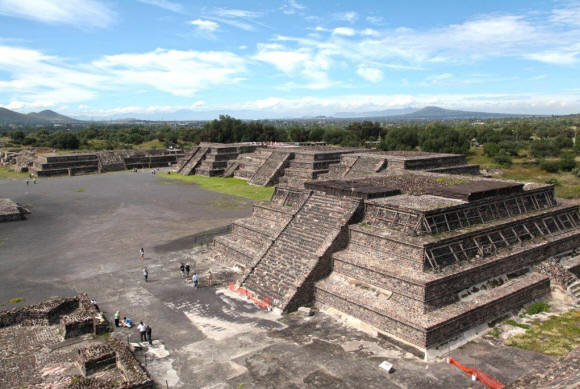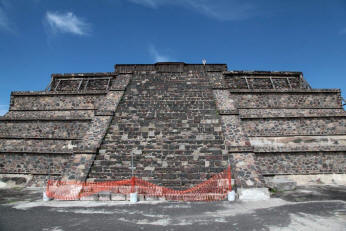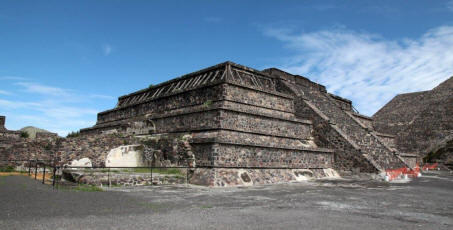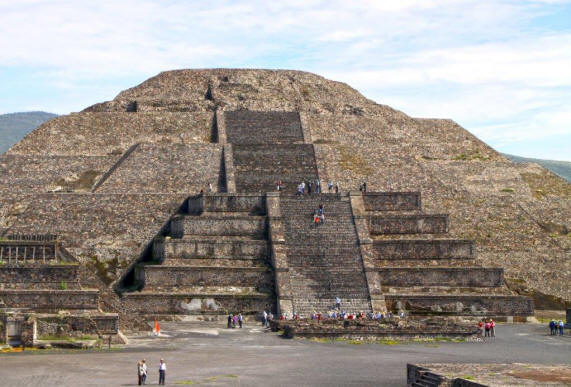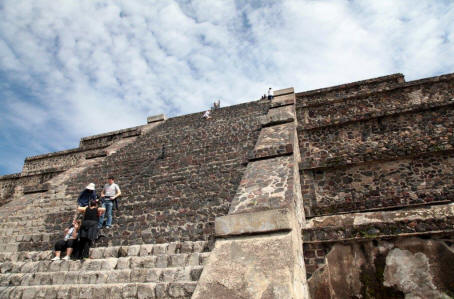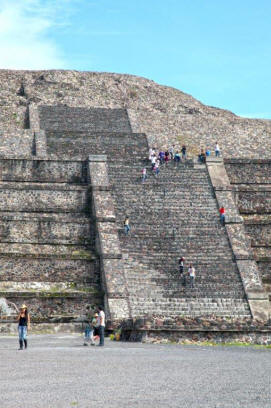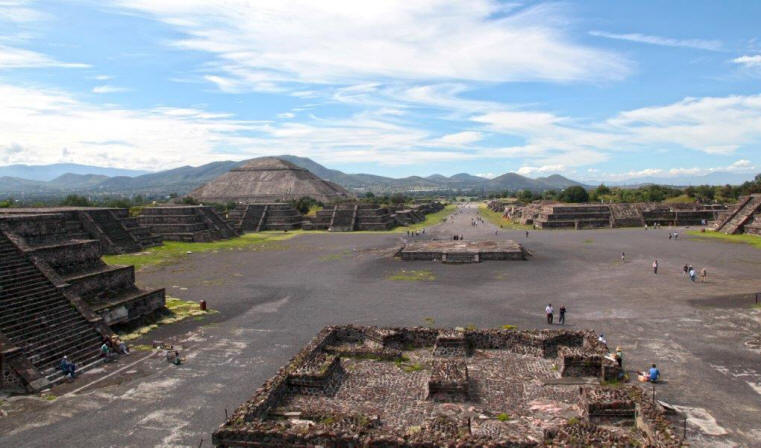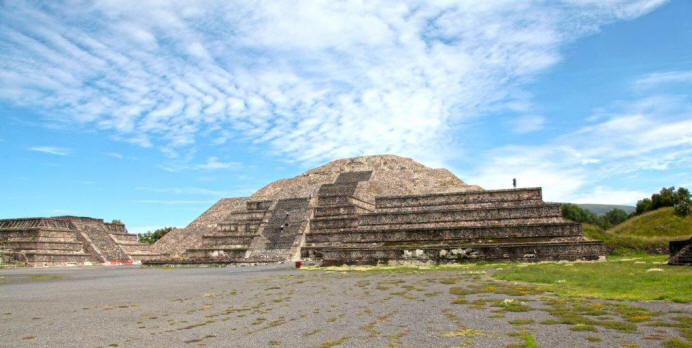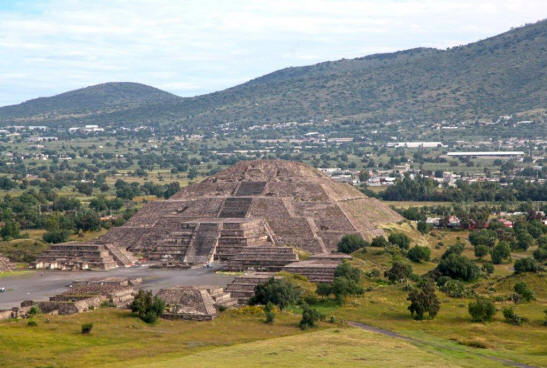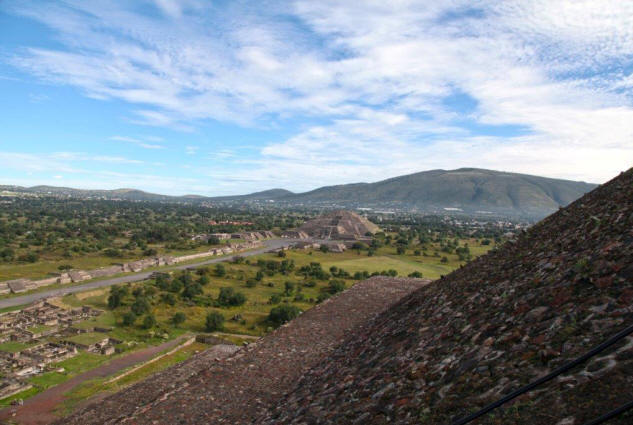|
Home
Planning
& Info
Regions RVing
Archeology
Articles
Road Logs Insurance
Photos
Mexico
News Ontheroadin |
|
Pyramid of the Moon by Dorothy and Bill Bell
The Pyramid of the Moon was named by the Aztecs who discovered Teotihuacan centuries after the original inhabitants and builders had left the area. Reflecting the shape of the hill directly behind it Cerro Gordo, the Pyramid of the Moon is the starting point, the northern landmark of this extensive urban layout and of the Avenue of the Dead. Beautiful View of the Pyramid of the Moon. Note surrounding Pyramid/Plaforms in the Plaza of the Moon and in the foreground, the main Plaza Alter dedicated to the Great Goddess,
While the second largest structure in the ancient city, the Pyramid of the Moon is elevated by the land at higher ground and is the highest point in the complex and commands its own royal audience in the plaza below. Twelve small pyramid platforms surround the Plaza of the Moon, large enough perhaps for thousands of the early residences to witness the sacrificial rituals played out from the Pyramid of Moon. In the center of the plaza is a singular bold alter. The Pyramid of the Moon was the first large building in the City. Building commenced in the first century and like a Russian doll, the pyramid was covered again by another pyramid producing a larger structure for each of the seven stages. Human and animal sacrifices and other offerings have been discovered that seem to mark the commencement of a least three new stages.
The Pyramid of the Moon and Plaza -photograph taken from the Pyramid of the Sun. Note the central alter and adjoining Pyramids.
Built between 1 and 350 AD through successive stages, the Pyramid grew to forty six meter (150 feet) high with a base of 168 meters (550 feet) square. A Pyramid structure at the south side provides a steep stairway up to the clouds. View from the Avenue from the Dead. Note the vendors selling hammocks, tablecloths, jewelry and other trinkets.
View of the Plaza of the Moon - photograph taken from the Pyramid of the moon.
The Pyramid of the Moon and Plaza were a primary religious and sacrificial center. The earliest human sacrifice appears to be around 200 AD. Tombs in the pyramid contain both animal and human sacrifice as well as grave objects made of obsidian and greenstone.
Photographs from the Plaza of the Moon showing different pyramids
A tomb marking the fourth construction stage held a single male buried alive- wounded with his hands tied behind his back - and jaguar, wolf and puma skeletons and over 400 relics. It was dedicated to The Great Goddess, the ruler of water, earth, fertility and creation. The tomb marking the fifth stage of construction contains four human skeletons and other ritual offerings.
The Plaza of the Moon contains a central alter- also dedicated to the Great Goddess – and four rectangular spaces which form what is known as the Teotihuacan Cross. The space provided an excellent viewing area for religious and political rituals.
Human sacrifice was used to keep the social order and ensure that the ruling elite, the priests and holy men retained their grip on power. Many Mesoamerican cultures sacrificed their enemies that they captured in battle and brought them back to their city for the population to witness rather than merely kill them on a battlefield.
Climbing the Pyramid of the Moon is now limited to the five tiered platform attached to the front. The stairs are steeper than the Pyramid of the sun so you should be prepared for a strenuous climb.
Take water, camera and cell phone. The view is spectacular as you can see directly down the Avenue of the Dead; past the Pyramid of the Sun and south to the Citadel.
More pictures Below
The Plaza is large and open- perfect for a huge audience to watch the religious rituals on the Pyramid patios
The Photograph shows the patio of stairs and platforms leading up to the Pyramid of the Moon; probably used in sacrificial rituals for the audience in the Plaza below
The Avenue of the Dead leading to the pyramid of the Moon. Photograph from the Pyramid of the Sun.
Vendors on the Avenue of the Dead. The Pyramid of the moon is in the background with Cerro Gordo behind it.
It is a magical journey and a gift from Mexico to experience these antiquities.
|
*
|
|
|
What You Should Consider for Your Visit
|
|
On the Road In - Mexico
editor@ontheroadin.com
